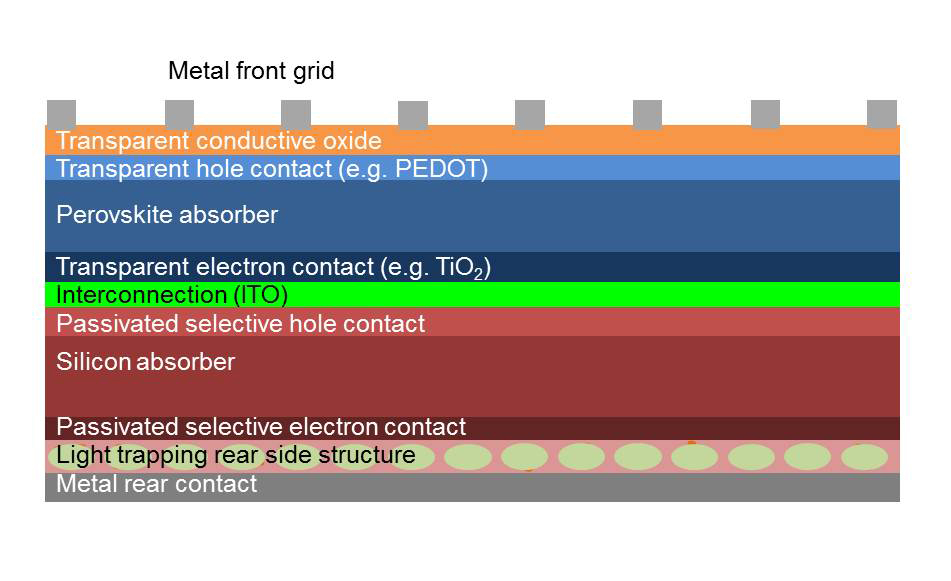| Duration: | May 2016 - December 2019 |
| Contracting Authority/ Sponsors: | German Federal Ministry of Economic Affairs and Energy (BMWi) |
| Project Partners: | Albert Ludwigs University Freiburg, Helmholtz-Center Berlin for Materials and Energy, Heraeus Germany, MERCK |
| Project Focus: |
PersiST – Perovskite-Silicon Tandem Solar Cells

Thanks to silicon technology, photovoltaics became a mass market and achieved in many countries electricity generation costs at the level of conventional electricity generation methods. As the majority of the remaining costs scales with the area, an increase in efficiency is the most effective lever for a further reduction in electricity generation costs. However, here, pure silicon photovoltaics reaches its limits. The current world record of 26.3 % is already very close to the theoretical upper limit. Tandem solar cells can achieve significantly higher efficiency. Here, an upper solar cell with a higher band gap uses photons with high energy efficiently, while a lower solar cell with a lower band gap uses low-energy photons.
The objective of the “PersiST” project is the production of a perovskite silicon tandem solar cells with an efficiency of more than 29 %. Perovskite solar cells can use high-energy blue and green light significantly more efficiently than silicon solar cells. In turn, silicon solar cells use red and infrared light, which is impossible for perovskite solar cells. Furthermore, perovskite solar cells can be produced inexpensively.
The use of established silicon technologies for the so-called “bottom solar cell” enables a fast transfer in industrial manufacturing. The concept of a “monolithic” tandem solar cell pursued in the “PersiST” project, where the perovskite solar cell and the silicon solar cell are connected directly, simplifies subsequent module assembly compared to other concepts, where the solar cells are individually contacted. To place the perovskite solar cell as so-called “top solar cell” on a silicon solar cell, all components must be developed further. For this reason, we research together with our partners, how to connect the perovskite and silicon solar cell using optimized contact and charge carrier transport layers. Furthermore, we modify the silicon solar cell for its use as bottom solar cell, optimize the optical design of the overall system, and investigate the durability of the tandem solar cell. The tandem solar cell should be realized on an area of 100 cm2 and reduce the electricity generation costs in the future by one third through the obtained increase in efficiency.